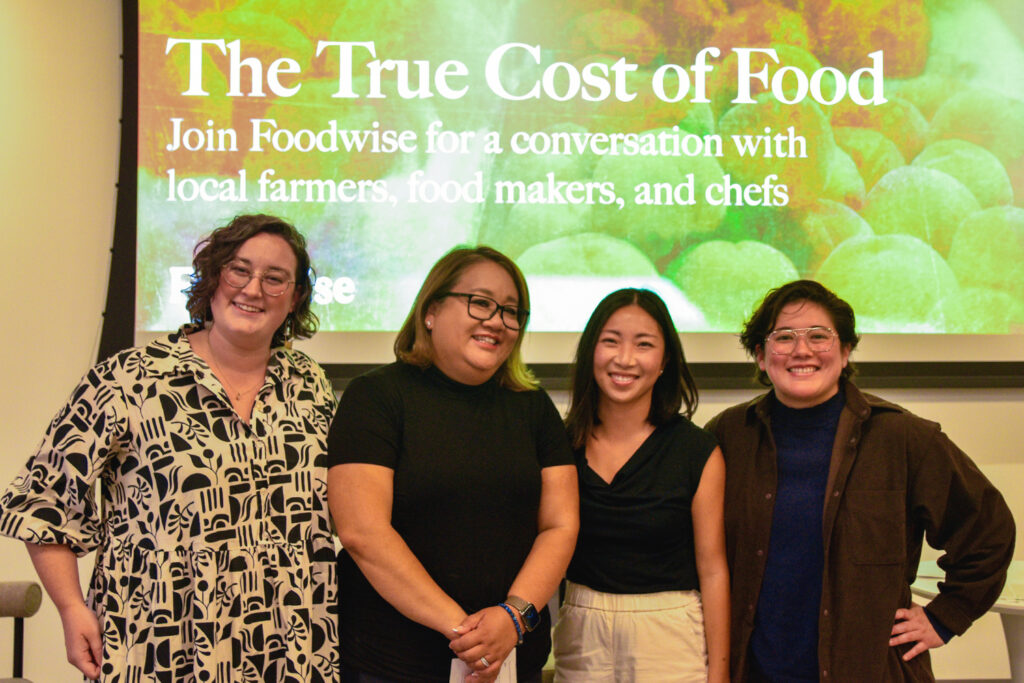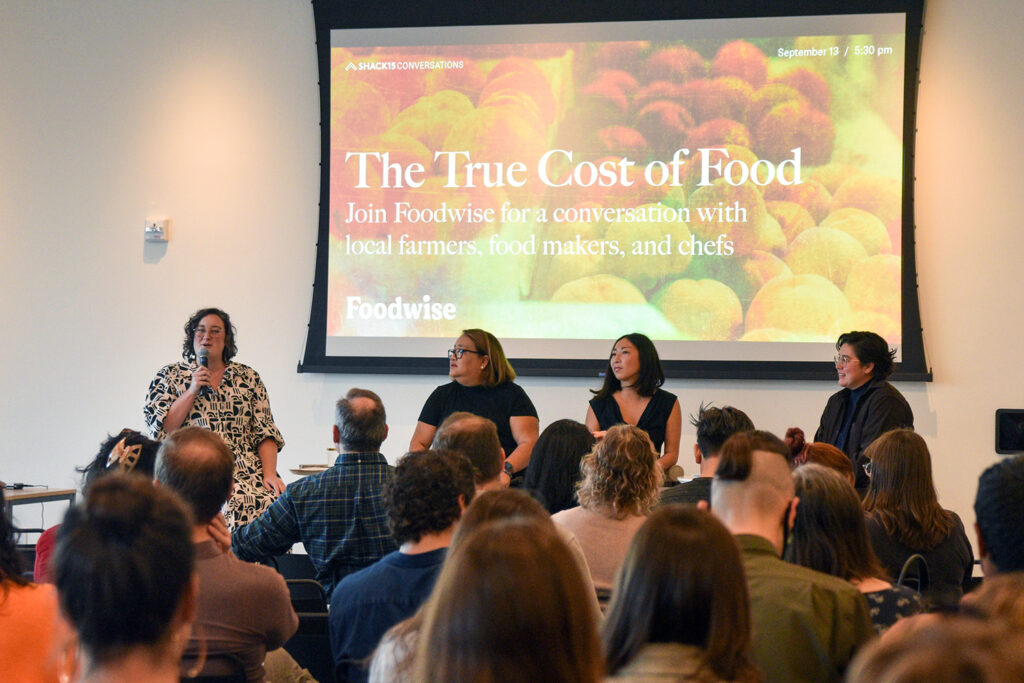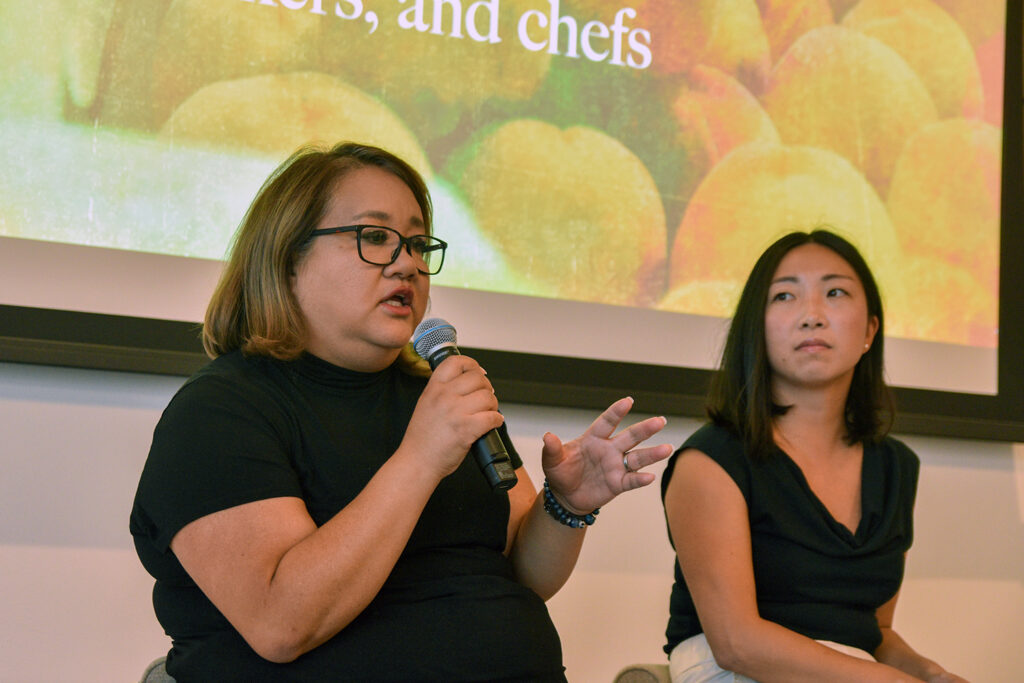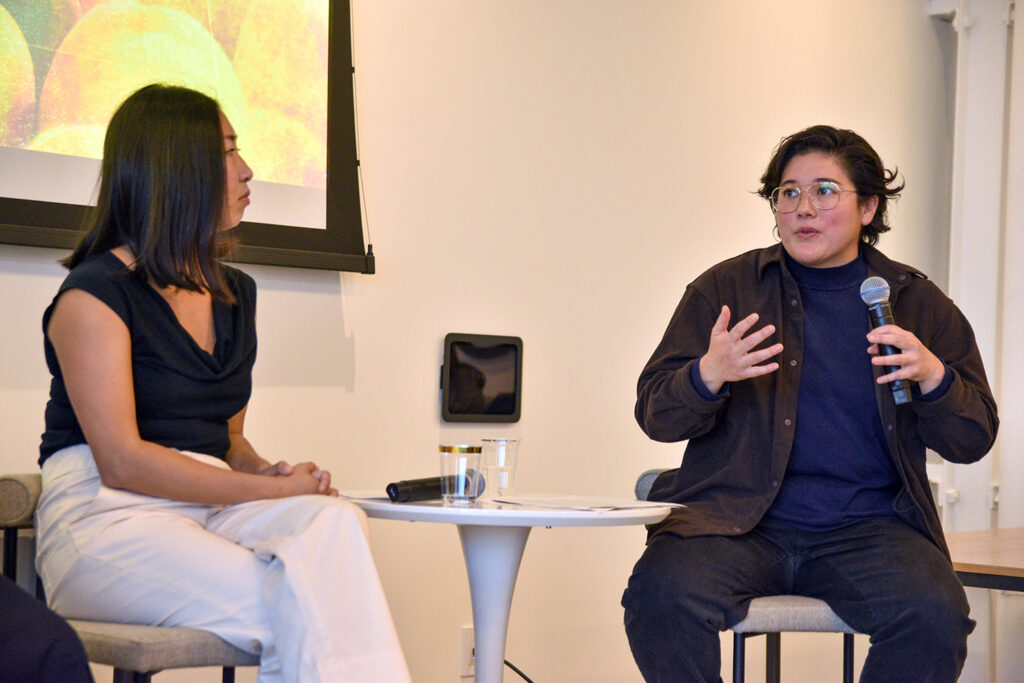Bay Area Restaurateurs Discuss the True Cost of Food—and What You Don’t See on Your Dinner Bill
Selina Knowles, Communications Coordinator
October 6, 2023

You’ve just finished a delicious meal at your favorite neighborhood spot, and the server drops off the check. The tab is more than you expected, and you wonder, How did we spend so much? You’re not alone in feeling the sting of rising food costs. With inflation, consumer prices have risen nearly 5% in the past year.
Restaurants have been feeling the impacts, too. Between operating costs, fairly compensating employees, sourcing quality ingredients, and keeping food affordable for diners, running a food business in the Bay Area is a tricky balancing act.
In September, Foodwise hosted a gathering to discuss “The True Cost of Food,” and what factors impact food businesses’ bottom lines. Here are a few takeaways from the panelists, which included Dumpling Club founder Cathay Bi, K&J Orchards farmer and Pomet restaurant owner Aomboon Deasy, State Bird Provisions chef Gaby Maeda, and SPUR’s Katie Ettman. You can listen to the full talk here.

The Three Levers of Business Budgeting
Dumpling Club’s Cathay Bi laid out the three levers that business owners have to work with to achieve profitability: cost of goods sold (COGS), rent, and labor—the last of which has increasingly become the most costly. She invited the audience to consider: “When a business’s price of food is low, you have to think about ‘Who did they squeeze?’”
Cathay started her business during the pandemic, making and selling frozen dumplings in the Bay Area. Her popularity was on the rise when she decided to expand and open a multipurpose space in the Mission District in early 2023, where she continued to sell her dumplings, as well as offer classes and a retail shop, in effect running three businesses.
As her business grew, her labor costs did, too. Her costs reached 20% for ingredients (including sourcing local produce from the farmers market) and other goods, 15% for rent, and 65% for labor. “If you add all of those numbers up, we’re at 100%, which leaves me no money left over for insurance maintenance, the rainy day fund, any of those things,” said Cathay.
After four years of running Dumpling Club, Cathay made the difficult decision to close up shop. “In the effort to protect my business from all the twists and turns of this pandemic and post-pandemic recovery, I also handicapped it a little bit,” she reflected. Dumpling Club is just one of many businesses that have announced plans to close in post-pandemic San Francisco. New restaurants face a particularly steep uphill battle to profitability.

Uncovering the Unseen Costs of Labor and Climate
Aomboon “Boonie” Deasy brought her perspective both as farmer and restaurateur. After opening Pomet, a fine dining farm-to-table restaurant in Oakland, in early 2022, she’s still waiting to turn a profit. At the restaurant, labor makes up half of the cost of operations, including employee benefits such as healthcare and paid time off.
“There are days where I’m afraid I won’t make payroll,” she shared.
Pomet includes a 20% service charge to their bills, a decision that Boonie made early on, with the goal of fairly compensating her workers instead of relying on discretionary tips. However, one drawback is that payroll taxes still apply to service charges.
In addition to labor, rent, and COGS, Boonie cites climate change as a less-considered factor that greatly impacts her business. A second-generation farmer at K&J Orchards, Boonie said, “My life is dictated by Mother Nature. I’m at the mercy of how much rain she’s going to give me in order for me to have [which and how much] produce.” Pomet sources its produce from her family’s farm as well as other small farms at the Ferry Plaza Farmers Market.
This past year, for example, long and rainy winter shortened the already short cherry season to a mere five weeks. To meet the ever-high customer demand with limited harvest, K&J Orchards had to raise their prices on cherries.
She’s grateful that many farmers market shoppers are conscious of what goes into growing food sustainably. “I think people here are more or less aware of what the costs of things really are,” she says. “I was charging $10 a pound for cherries this year and nobody blinked an eye.”
But the Bay Area’s keenness to a just food system applies to every part, from valuing farmers and restaurant workers to wanting good food to be accessible to everyone. “I think that there are also a lot of champions in San Francisco for affordability because of the fact that we are in this politically progressive place,” says Cathay.

Finding the Sweet (Pricing) Spot on a Sliding Scale
In the United States, consumers spend about 11% of their income on food, and households with lower incomes spend proportionally more than those with higher incomes. Moderator Katie Ettman, Food and Agriculture Senior Policy Manager at SPUR, shared that lower-income households spend about 30% of their budget on food, while higher-income households spend only 7.5% (among the least globally).
With the high cost of living in the Bay Area, restaurants grapple with how to keep their menu prices affordable to patrons while still covering their costs. “For us at State Bird Provisions, we still need to be approachable,” said Gaby Maeda, the Executive Chef of what has been repeatedly ranked among one of the cheapest Michelin Star restaurants.
At State Bird, menu items start at $4, something that’s financially feasible in part because they’re dedicated to eliminating food waste and utilizing every last part of the ingredient. She quoted advice passed around among fellow chefs, “Think twice before you throw something in the compost bin. It’s your last chance at creativity.”
Even with resourceful recipes, the costs of some of State Bird Provisions’ dishes have risen along with COGS. For example, their signature “state bird” dish, the quail, is the most expensive one on the menu. When Gaby started working at the restaurant nine years ago, the bird cost $8 to purchase from the rancher. The restaurant now pays $13 per bird, due to climate change factors and increasing feed costs.
Gaby worries about how these necessary price increases impact who can afford to eat at the restaurant. “I think that it’s tough to overcharge because then you’re going to shut off an entire group of people that can’t even eat the food that you’re producing,” said Gaby.
A Near-Impossible-to-Win Situation, on Both Sides
“There is a lot to be said for owning our values of shopping at the farmers market and paying people well,” said Katie, “and [also] understanding that there are always going to be, here in San Francisco, folks for whom a restaurant meal is actually never going to be within a comfortable reach…I think there’s something to own about that juxtaposition.”
At the end of the night, if paying the bill brings up mixed feelings for you, know that restaurant owners are also wrestling with tough realities and choices as they endeavor to keep you coming back to their table.
“There is a lot of tension and thoughtfulness that goes from business owners who want to achieve those San Francisco ideals of paying their workers really well, and having something on the menu that’s $5, so that somebody who can’t afford more can actually eat,” says Cathay. “I think a lot of customers are trying to play both sides of things, and it’s almost impossible to win in that equation.”
Like Cathay, Boonie, and Gaby, many are also doing their best to keep their businesses ethical and sustainable by taking care of their workers and supporting small local farms and purveyors. By supporting those restaurants, you can help uphold those values and keep your local community thriving.
Want to dig in further? Listen to the full conversation here.
Topics: Equity, Restaurants, Talks
